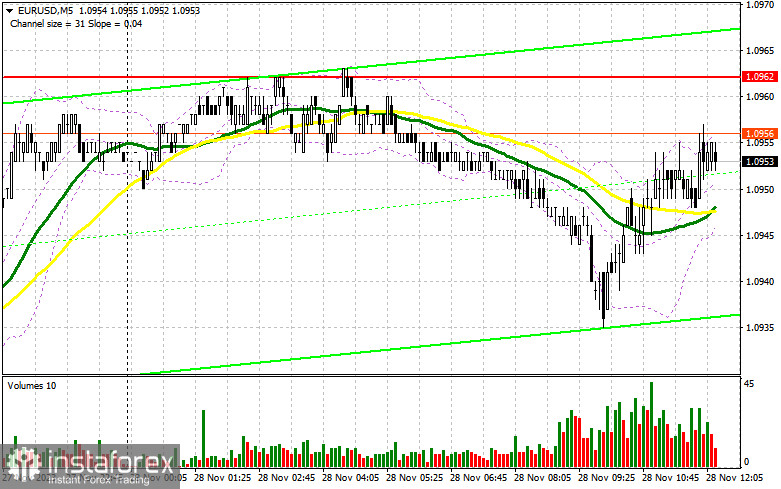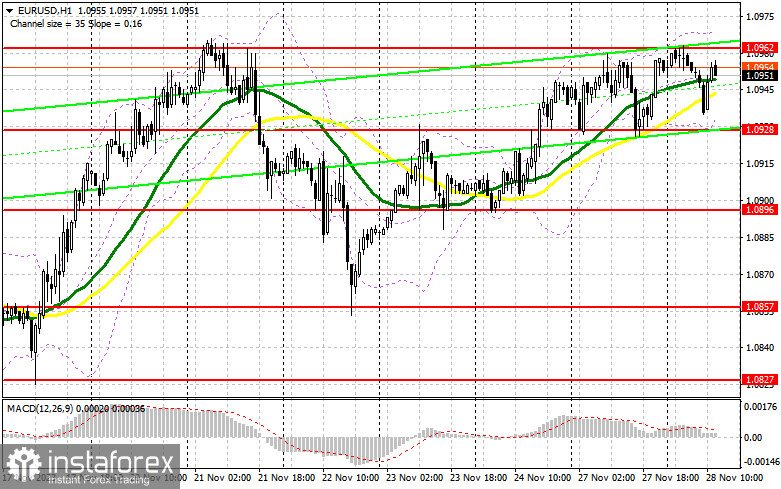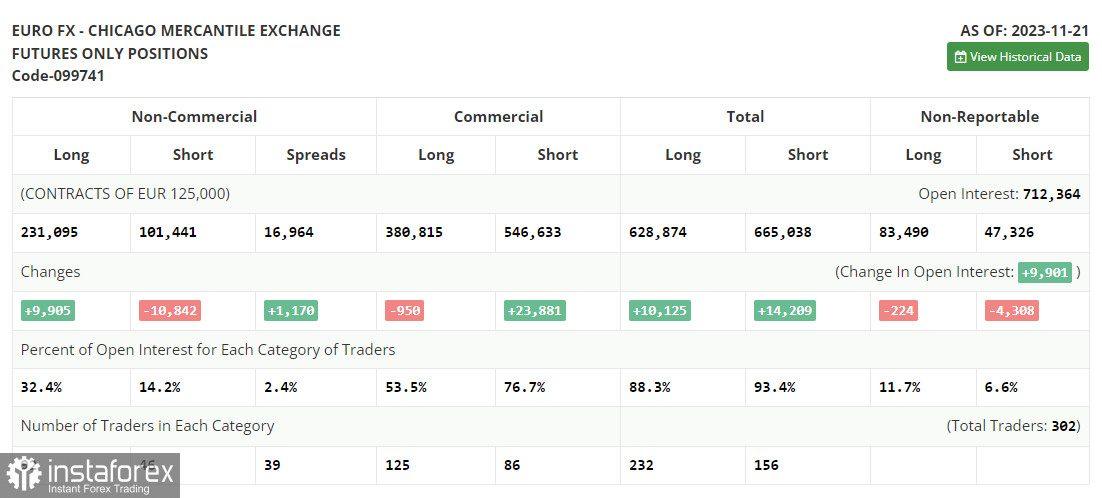In my morning forecast, I drew attention to the level of 1.0928 and recommended making trading decisions based on it. Let's look at the 5-minute chart and analyze what happened there. The pair experienced a decline, but we never reached the test and the formation of a false breakout at 1.0928. The reason for this was still the low market volatility observed recently during the European session. The technical picture remained unchanged for the second half of the day.

To open long positions on EUR/USD, the following is required:
The released data on lending in the Eurozone did not lead to a surge in volatility but did not exert significant pressure on the euro, which is already positive. Ahead of us is a series of speeches by representatives of the European Central Bank, which could push the euro higher than the current monthly maximum. However, much will also depend on data on the US consumer confidence indicator, a decrease in which will be another reason to increase long positions, as well as soft comments from FOMC members Austan D. Goolsbee, Christopher Waller, and Michelle Bowman. Since trading is within a sideways channel, I prefer to act similarly to yesterday. A decline and the formation of a false breakout at the level of 1.0928 will confirm the presence of buyers in the market and provide a good entry point for long positions, counting on another rise in the pair and a test of the monthly maximum at 1.0962. A breakthrough and an update from top to bottom of this range are signals to buy and a chance to update the maximum around 1.1004. The ultimate target will be the area at 1.1033, where I will take profit. In the scenario of a decline in EUR/USD and the absence of activity at 1.0928 in the second half of the day, and this level was tested several times yesterday, nothing serious will happen to buyers. However, in this case, entering the market will be possible after forming a false breakout around the support area of 1.0896. I will consider opening long positions immediately on the rebound from 1.0857 with the target of an upward correction of 30-35 points within the day.
To open short positions on EUR/USD, the following is required:
Against the background of low volatility, sellers attempted but failed to reach the nearest support at 1.0928. Now, I expect their manifestation only after the formation of a false breakout around the monthly maximum at 1.0962. This will signal a sale counting on another downward correction and a test of support at 1.0928. Only after breaking and consolidating below this range and a reverse test from bottom to top do I expect to get another signal to sell with an exit to 1.0896. The ultimate target will be the minimum at 1.0857, where I will take profit. Testing this level can seriously affect the prospects of buyers. In the event of an upward movement of EUR/USD during the American session against the backdrop of very weak data on US consumer confidence and the absence of bears at 1.0962, the development of a bullish market will continue. This will open the way for buyers to the maximum of 1.1004. Selling can be considered only after an unsuccessful consolidation, entering short positions immediately on the rebound from 1.1033 with the target of a downward correction of 30-35 points.


Indicator Signals:
Moving Averages
Trading is slightly above the 30 and 50-day moving averages, indicating further pair growth.
Note: The author considers the period and prices of moving averages on the hourly chart (H1) and differs from the general definition of classic daily moving averages on the daily chart (D1).
Bollinger Bands
In case of a decline, the lower boundary of the indicator, around 1.0928, will act as support.
Indicator Descriptions:
- Moving Average (smoothens current trends by averaging volatility and noise). Period 50. Marked on the chart in yellow.
- Moving Average (smoothens current trends by averaging volatility and noise). Period 30. Marked on the chart in green.
- MACD Indicator (Moving Average Convergence/Divergence) Fast EMA period 12. Slow EMA period 26. SMA period 9.
- Bollinger Bands. Period 20.
- Non-commercial traders - speculators, such as individual traders, hedge funds, and large institutions, use the futures market for speculative purposes and meet certain requirements.
- Non-commercial long positions represent the total long open position of non-commercial traders.
- Non-commercial short positions represent the total short open positions of non-commercial traders.
- The total non-commercial net position is the difference between non-commercial short and long positions.





















